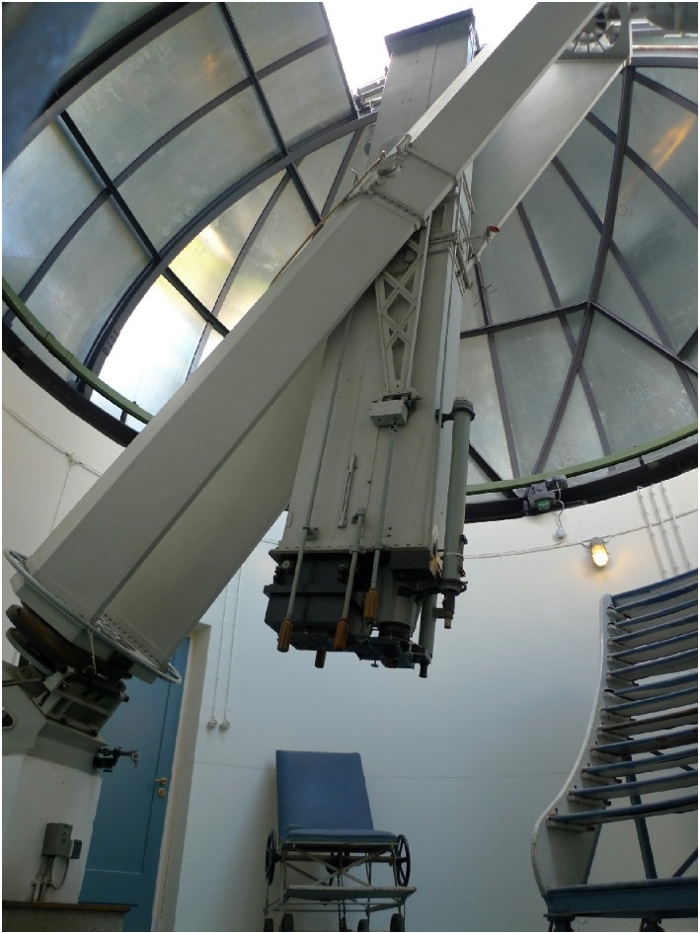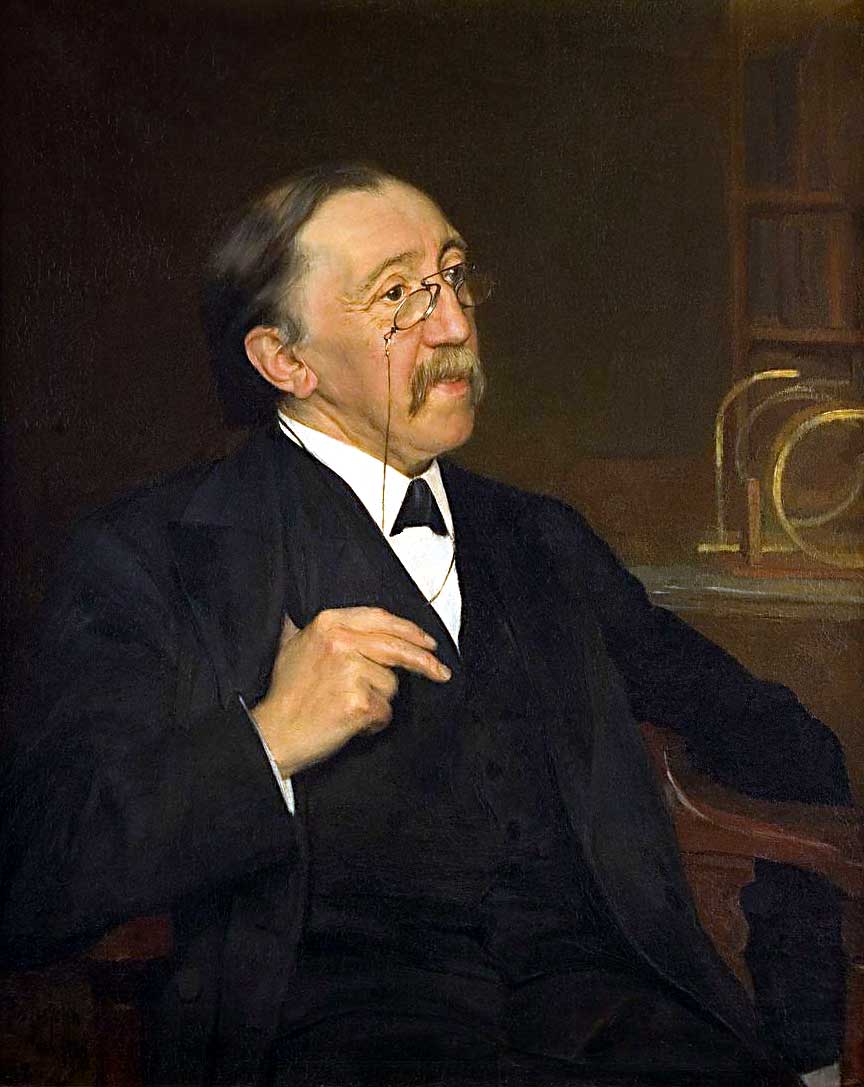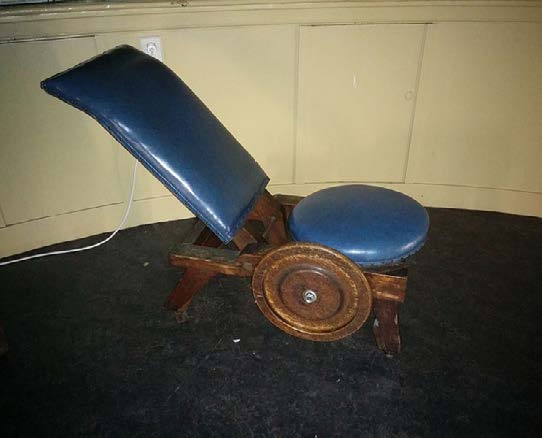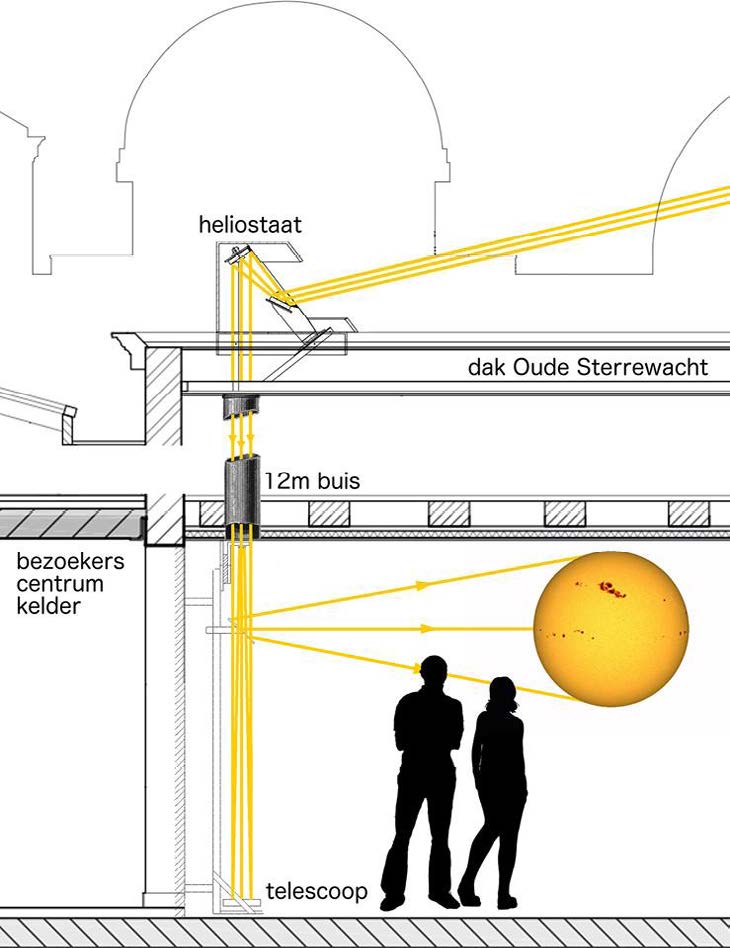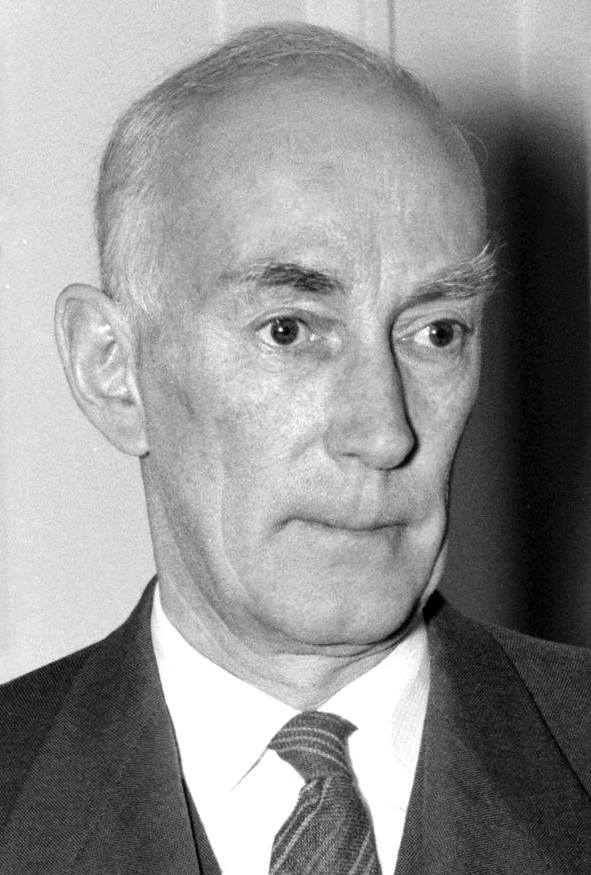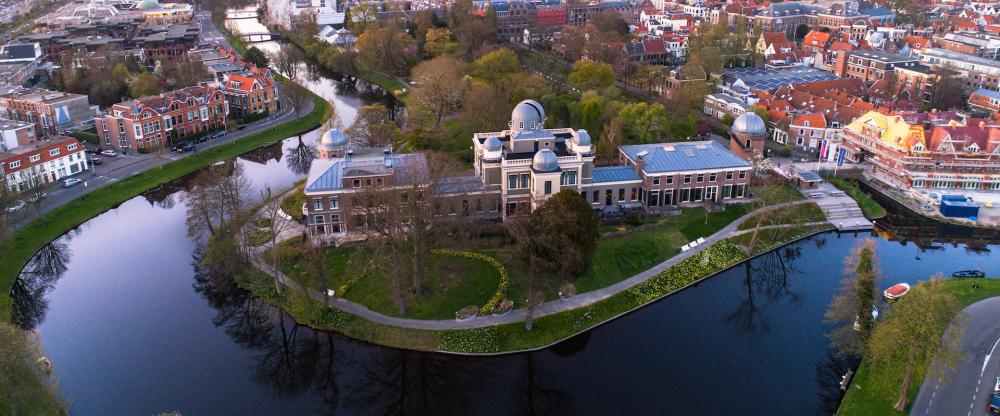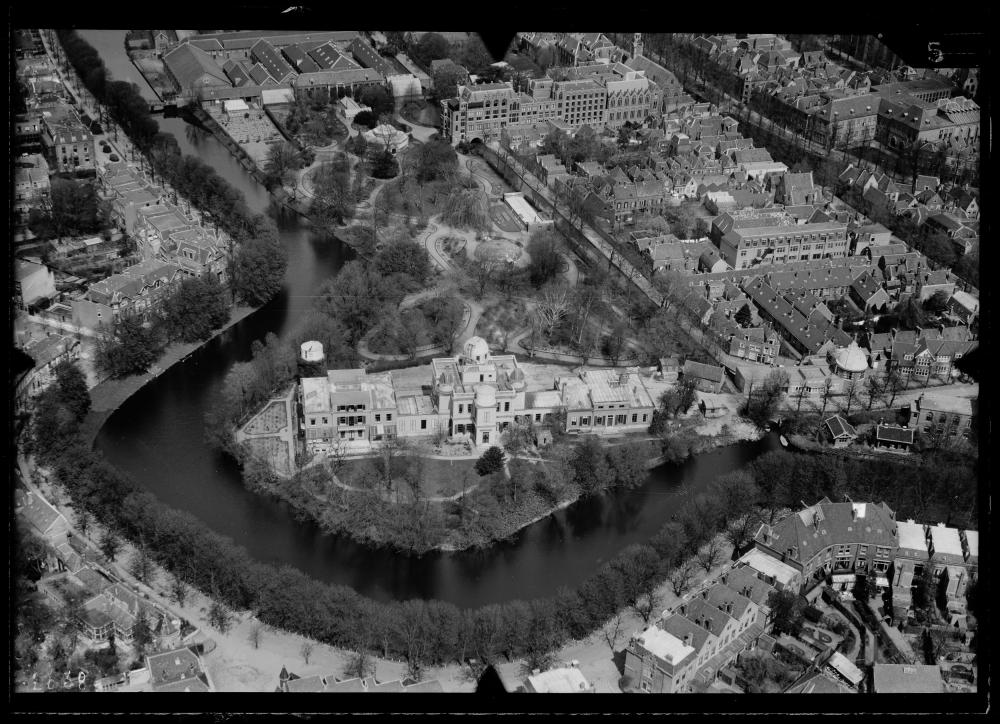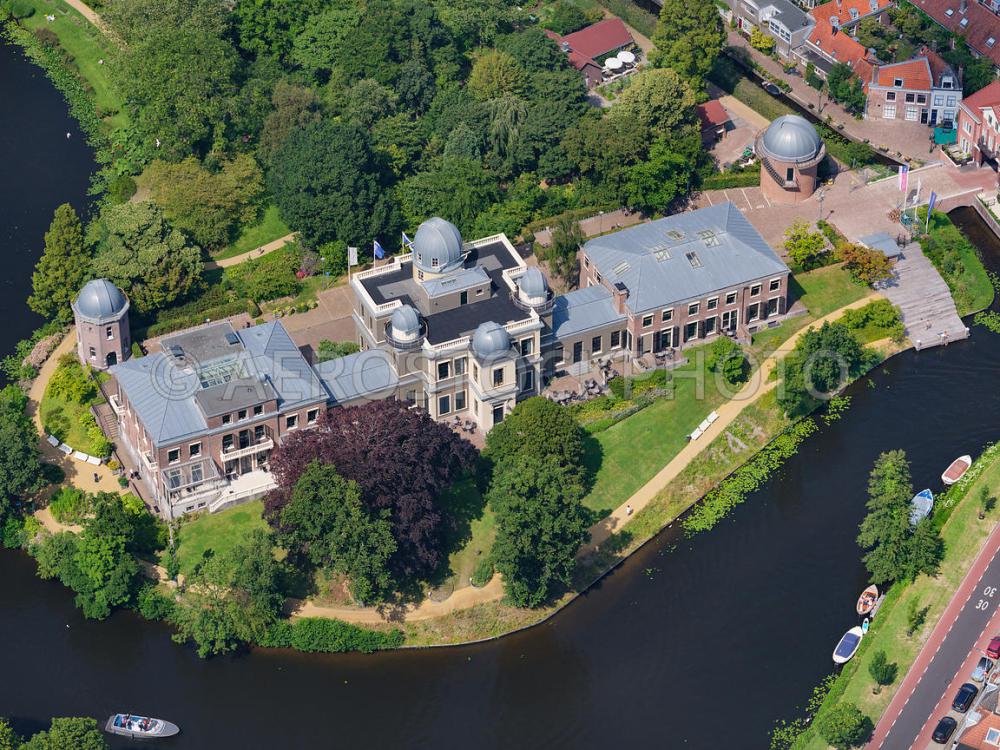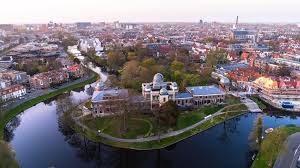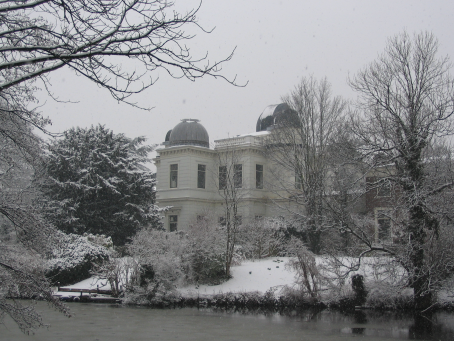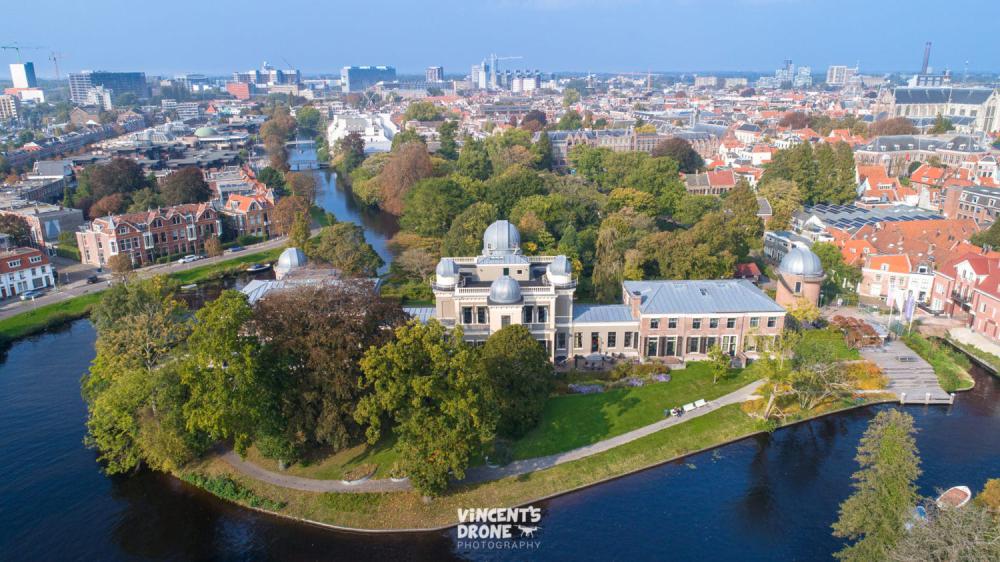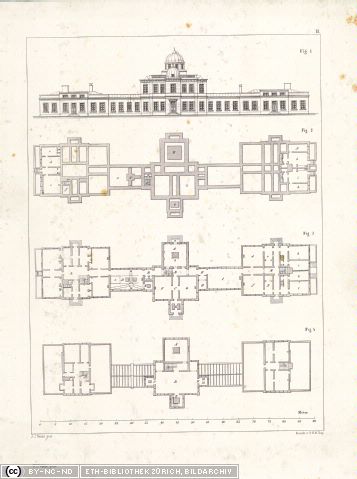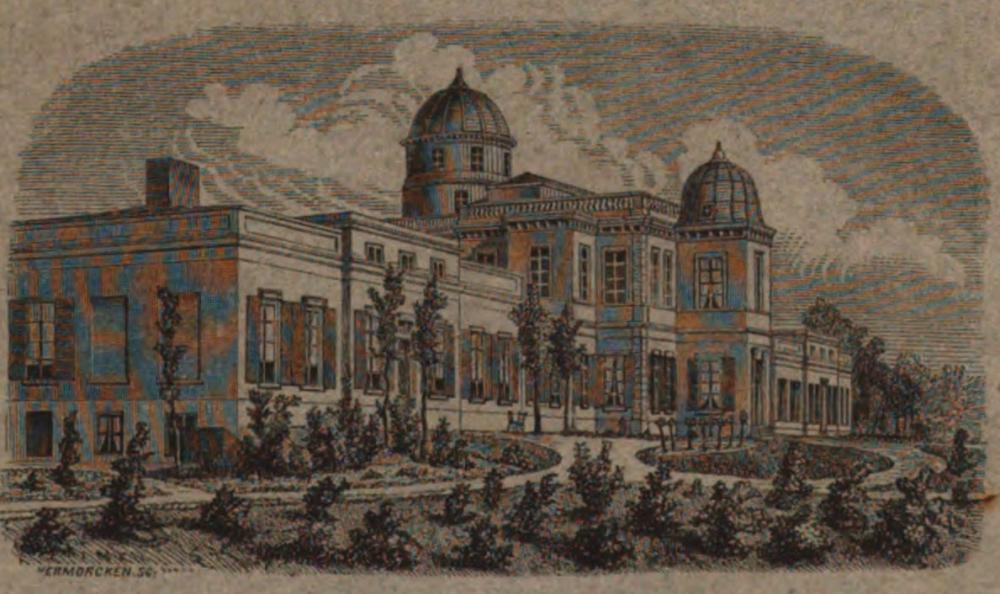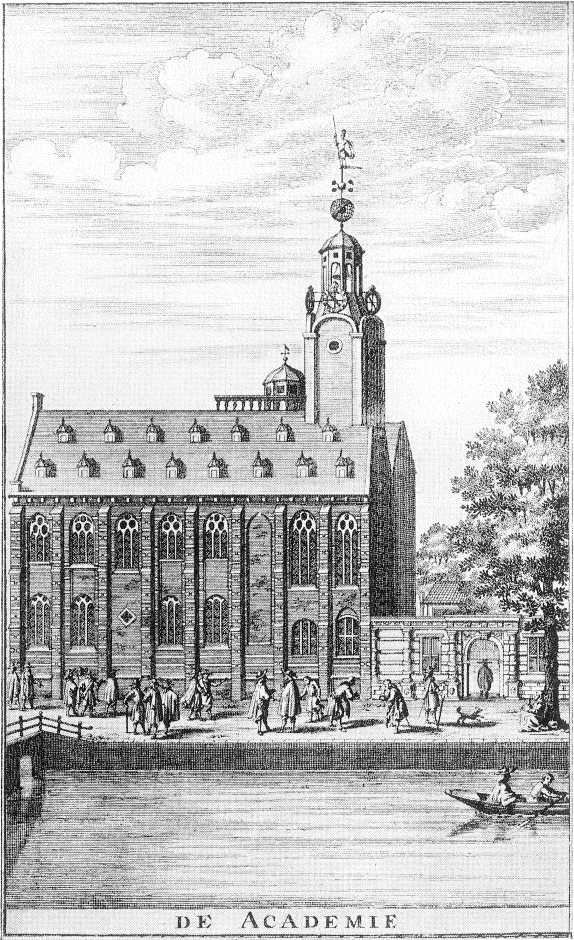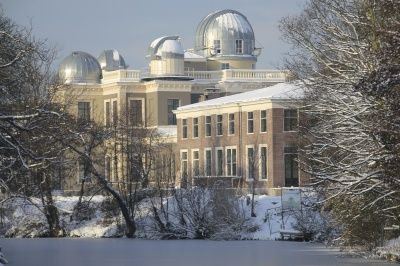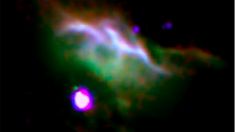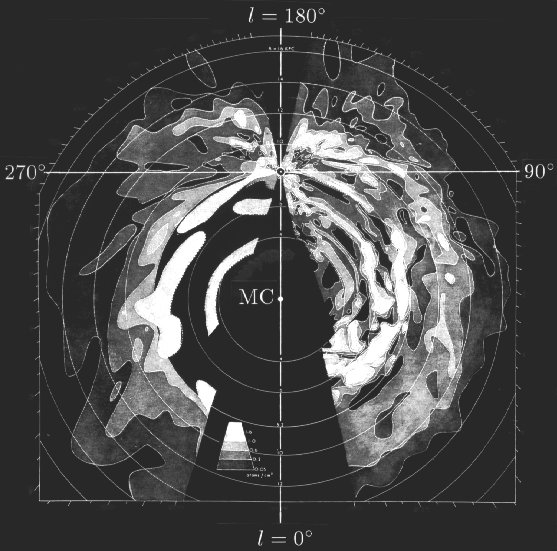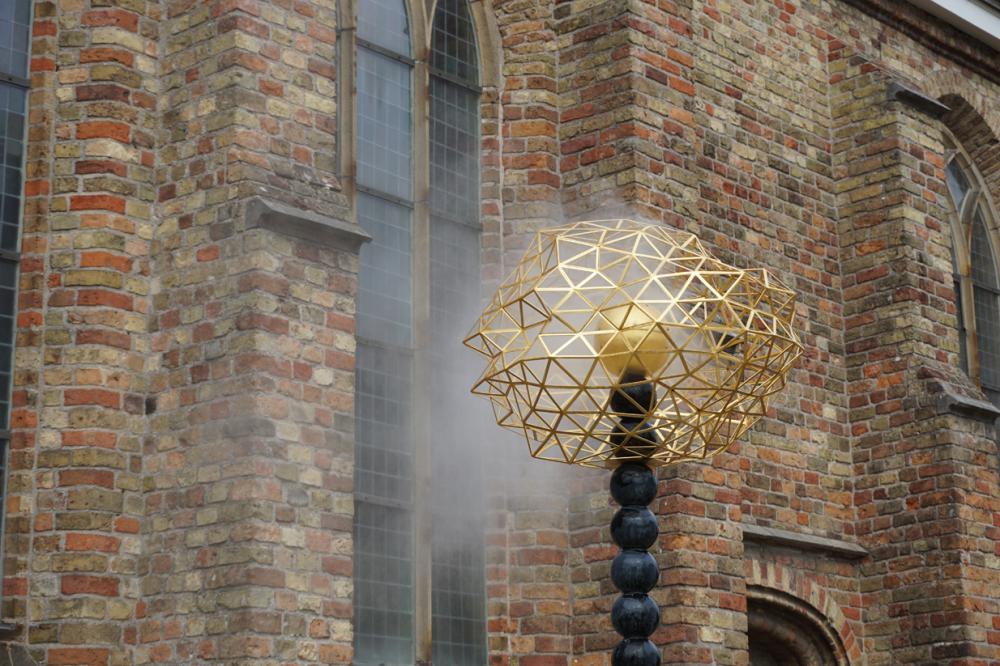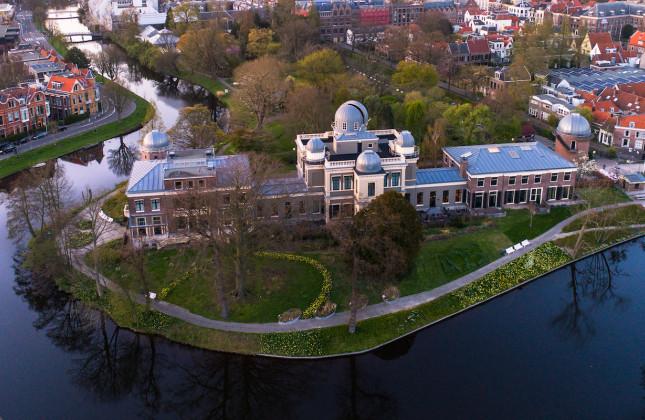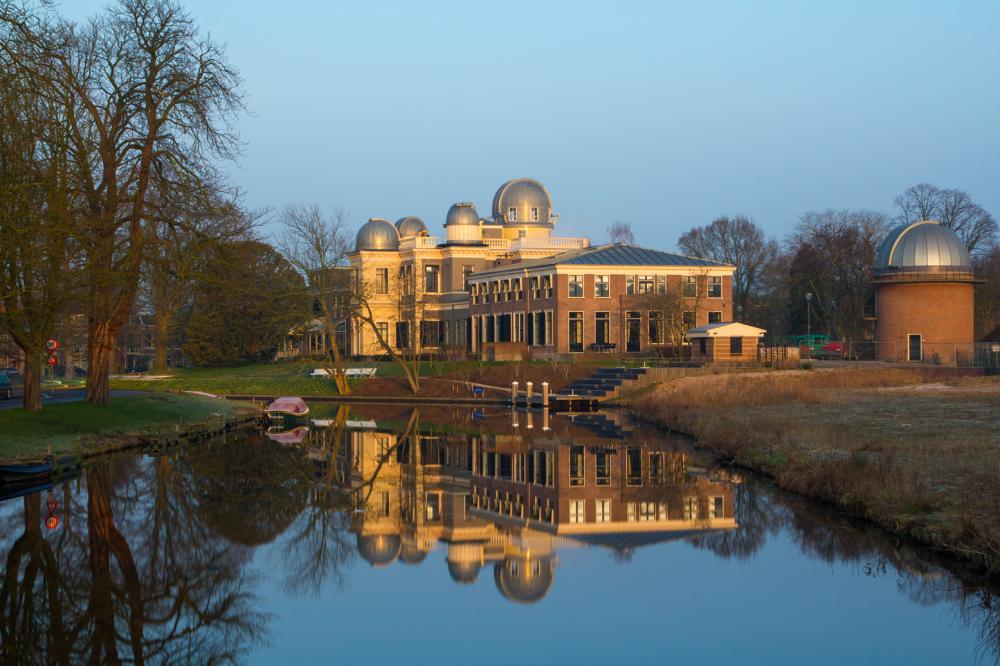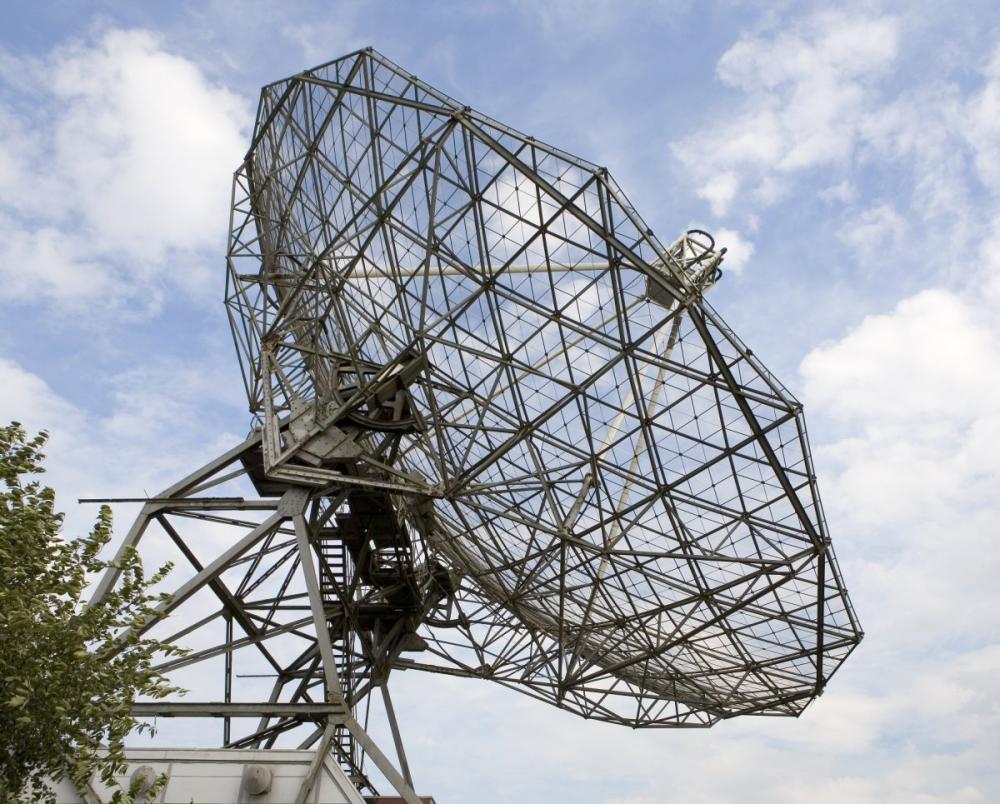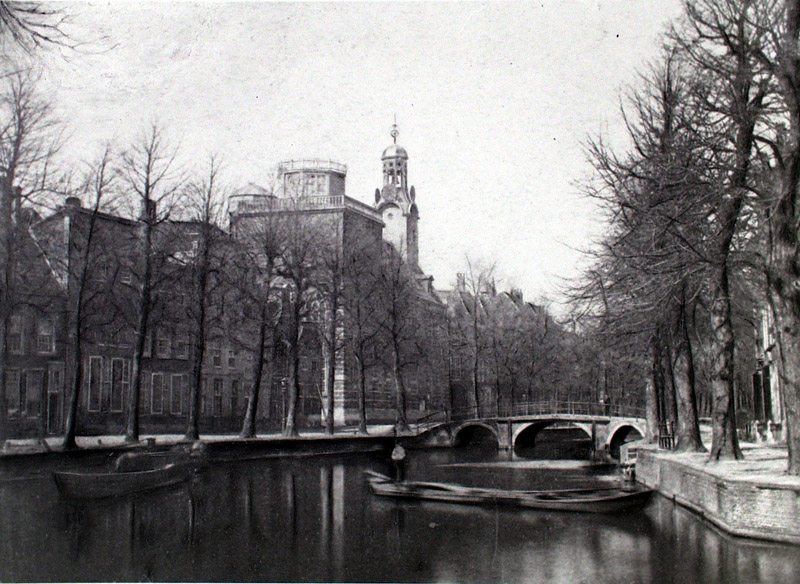
Category of Astronomical Heritage: tangible immovable
Oude Sterrewacht Leiden - Observatory of Leiden, Netherlands

Description
Geographical position
Oude Sterrewacht Leiden - Observatory of Leiden,
Sterrenwachtlaan 11 (Hortus Botanicus), 2311 GP Leiden, Netherlands
(moved in 1974 to Huygens Laboratory / J.H. Oort Building
Location 52°10’08’’N, 04°27’29’’E, Elevation 3m)
See also: Academy Observatory Leiden, Rapenburg (before 1860) (1633--1860)
Location
Latitude 52.168820 N, longitude 4.457997 E. Elevation ??? m above mean sea level.
IAU observatory code
013
Description of (scientific/cultural/natural) heritage
The first observatory (Academy) was established in 1633, it is the oldest university observatory in operation today, with a very rich tradition.
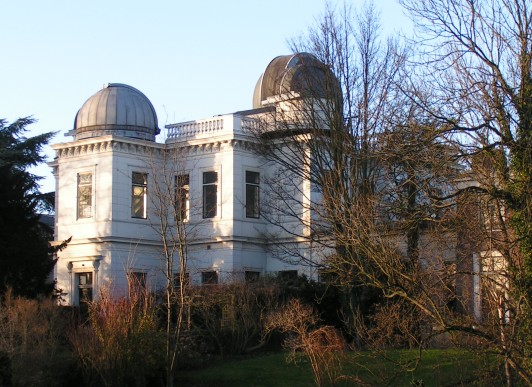
Fig. 1a. Oude Sterrewacht Leiden (1861), (Wikipedia)

Fig. 1b. Oude Sterrewacht Leiden (1860), (WitteSingel, CC)
The construction of a spacious new observatory building in 1861, under the supervision of Frederik Kaiser (1808--1872), today known as the Oude Sterrewacht ’Old Observatory’, built on the Witte Singel. This marks the beginning of the modern era of astronomical research in Leiden.

Fig. 2a. Oude Sterrewacht Leiden Observatory in 1668 (Kaiser 1868)
![]()
Fig. 2b. Frederik Kaiser (1808--1872), 1872 (Icones Leidenses 240, Wikipedia)
The Leiden Observatory had many world-famous directors, such as Frederik Kaiser (1808--1872), Willem de Sitter (1872--1934), Ejnar Hertzsprung (1873--1967), and Jan Hendrik Oort (1900--1992). Other famous astronomers at the Leiden observatory were Hendrik Antoon Lorentz (1853--1928) and Jacobus Cornelius Kapteyn (1851--1922).
In 1923, Leiden Observatory entered into an agreement with the Union Observatory in Johannesburg, South Africa, allowing observers to use both facilities. The first visitor from Leiden to the Leiden Southern Station was Ejnar Hertzsprung. In 1954, the Union Observatory's telescopes were moved to Hartbeespoort.
After the closure of the Leiden Southern Station in 1978, the largest telescope -- the 91-cm-Light Collector with the Walraven photometer -- was moved to La Silla Observatory Chile, where it remained in use until 2006.
In 1944, a student in Utrecht, Henk Christoffel van de Hulst (1918--2000) predicted the existence of the 21-cm-hyperfine line of neutral interstellar hydrogen. This was the start of a whole new field of research, the radio astronomy.
Research at Leiden Observatory from the 1950s onwards was marked by the rise of radio astronomy. Observations were first made with Würzburg antennas, and later with the radio telescopes in Dwingeloo (1956) and Westerbork (1970):
Thanks to Jan H. Oort, the Netherlands had always played a prominent role in this field: the 25-m-Dwingeloo Radiotelescope (1956), a national heritage site since 2009, and the Westerbork Synthesis Radio Telescope (WSRT), fourteen 25-m-radio telescopes deployed in a linear array arranged on a 2.7-km-East-West line (1970) -- both at one point the largest radio-telescope ever in the world, and the current LOFAR network (2010).
History
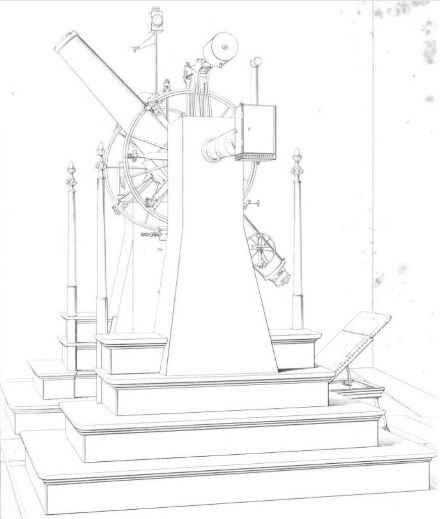
Fig. 3a. Meridian circle of the Oude Sterrewacht Leiden Observatory in 1868 (Kaiser 1868)

Fig. 3b. 16.6-cm-Merz-Refractor (1838), (Pietrow 2018)

Fig. 3c. 6-Paris-inch-Merz Refractor (1838) (Sterrewacht Leiden)

Fig. 3d. 26.6-cm-Repsold Refractor, 10-inch (Passchier, Leiden)

Fig. 3e. 34-cm-Photographic-Double-Astrograph (1897), (Pietrow 2018)
Instruments of the Oude Sterrewacht Leiden
- Huygens aerial telescope (D=10cm, f=400cm) (1683), replica, made by the Leidse Instrumentmakers School 2008-2014,
two lenses connected by a 4-m-long cord and a green mast with a small brass tube on top - Meridian circle, made by Pister & Martins of Berlin, ordered in 1859 (1868)
- Merz Heliometer Tower (1878) - in front of the Old Observatory on the west side,
designed by the famous architect Petrus Josephus Hubertus "Pierre" Cuypers (1827--1921).
The architect wanted depict a zodiac on it, but the director Bakhuyzen was afraid, it looks like astrology. - Reflector, made by John Browning, mirror by George Henry With.
- 16.6-cm-Merz-Refractor (6 Parisian inches, f=225 cm) with a unique wooden binocular tube,
made by the Optical-Mechanical Institute of Fraunhofer, Utzschneider & Reichenbach of Munich, and by Georg Merz of Munich (1838),
used for observing planets and comets, and double stars - 26.6-cm-Repsold-Refractor (10-inch, f=399.5cm),
made by A. Repsold & Söhne of Hamburg (1885),
optics made by Alvan Clark & Sons of Cambridgeport, Massachusetts,
used for observations of double stars. Gerard Kuiper (Kuiper Belt !) used it for his PhD research Statistical Research of Binary Stars.
(the 10-inch replaced the former 7-inch telescope)
The 10-inch-dome contains the so-called 'Einstein Chair', an old observing chair.
Einstein liked to sit there during his visits to Willem de Sitter. - 34-cm-Photographic-Double-Astrograph,
made by the brothers Paul and Prosper Henry of Paris (1897),
(Primary photographic lens: d=34cm - 13-inch, f=524cm, secondary visual lens: d=18cm, f=524cm)
on an English mounting, in the east tower - 48-cm-Zunderman Reflector -- Nasmyth-Coudé design (d=48cm, f=663cm),
made by the chief instrument maker, H. Zunderman of Leiden (1939, re-installed in 1947),
with a fork mounting, in the 1878 Heliometer Tower,
used for photometric observations of variable stars. - Heliostat, a solar telescope in "Schiefspiegler" (oblique reflector, invented by Anton Kutter) design (D=10cm, f=100m), (2014)
a 150-cm-image of the Sun can be projected inside the observatory - Meteoroscope (Frequency= 143.050 MHz, Antenna= 2 element Yagi, 2009--2015), calibrated to listen to the Graves Radar in Dijon, France

Fig. 3f. 48-cm-Zunderman Reflector (1939), (Wouter Schrier)

Fig. 3g. Merz Heliometer Tower, Cuypers (1878), (Pietrow 2018)

Fig. 3h. Heliostat (2014), (A. Pietrow)

Fig. 3i. Huygens aerial telescope (D=10cm, f=400cm) (1683), (Pietrow 2018)
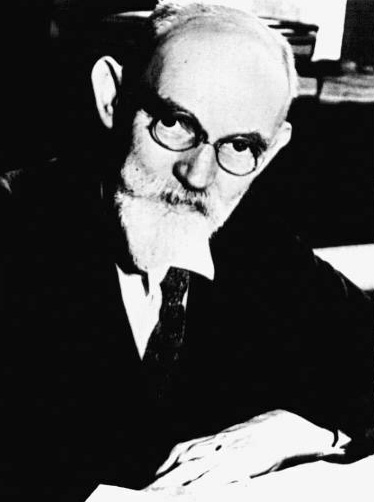
Fig. 4a. Willem de Sitter (1872--1934), (CC)
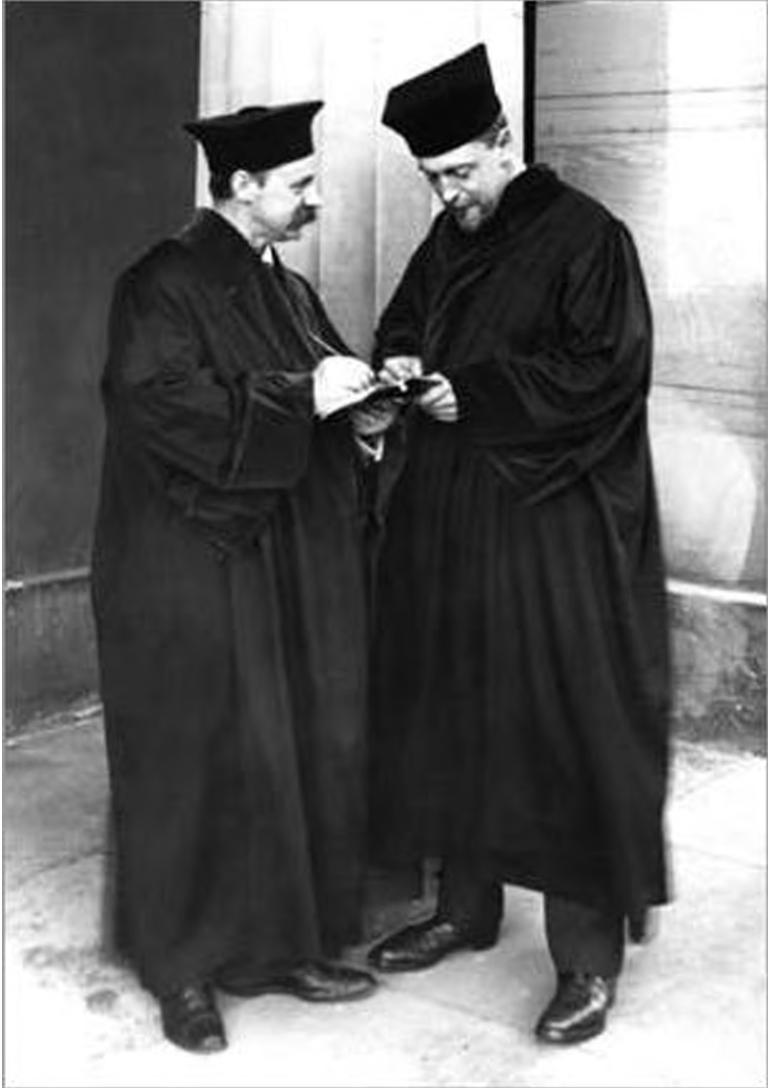
Fig. 4b. Karl Schwarzschild and Ejnar Hertzsprung (1873--1967), 1909 (Cod. Ms. K. Schwarzschild 23: 1,13, Nachlass K. Schwarzschild; SUB Universität Göttingen)
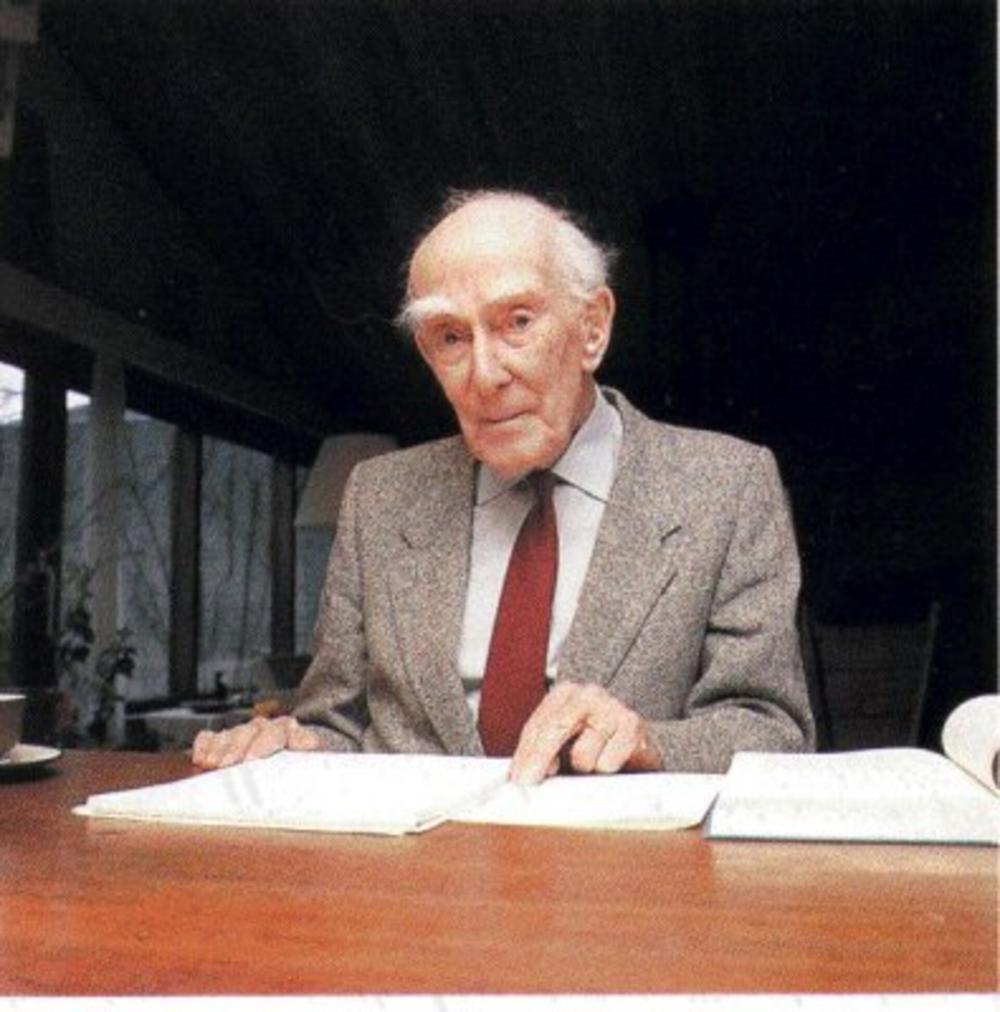
Fig. 4c. Jan Hendrik Oort (1900--1992), (ESA)
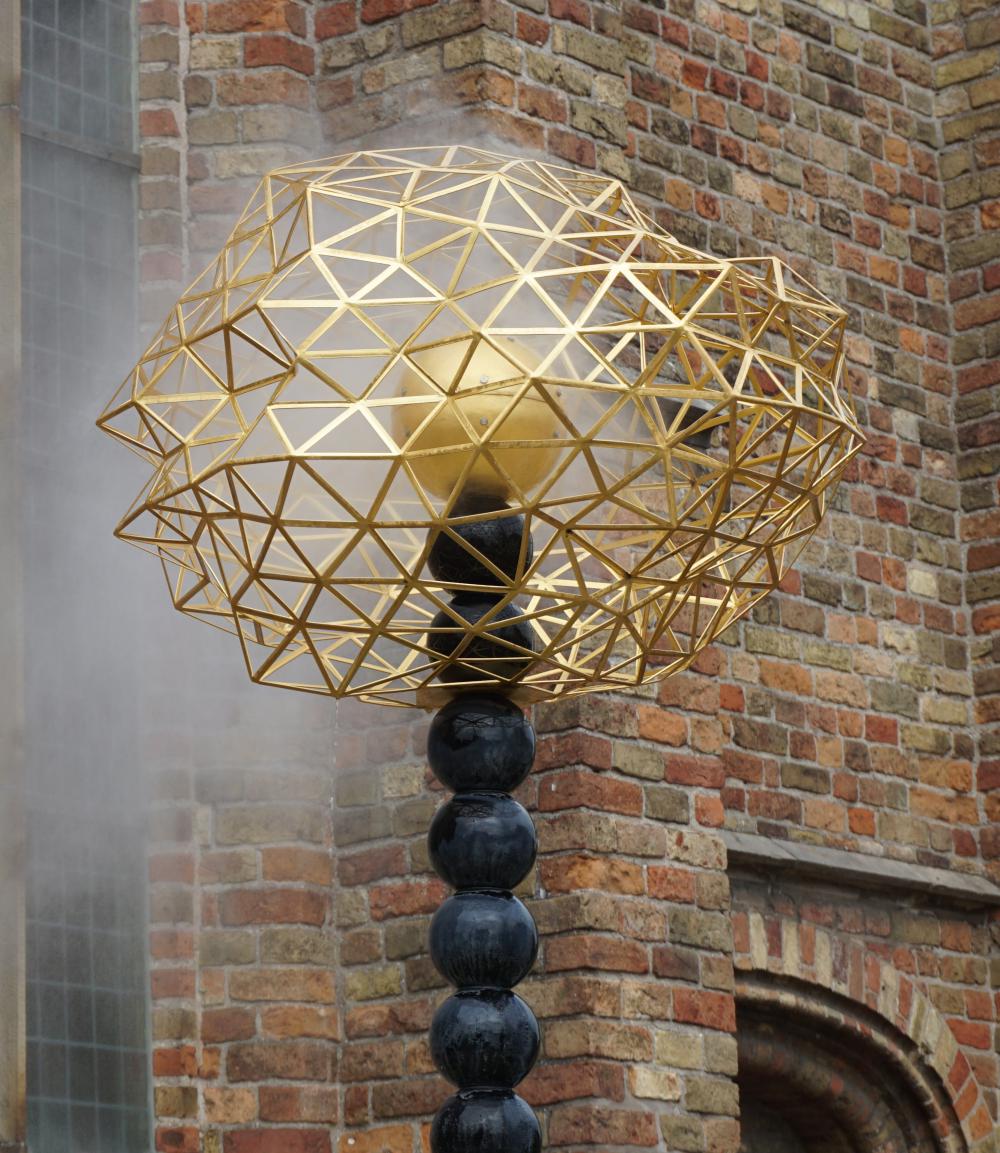
Fig. 4d. Oort Cloud, a large family of comets far away from the Sun; fountain made by Jean Michel Othoniel, Franeker (Wikipedia, CC3, R A Mueller)
Directors of the Academy, Oude Sterrewacht, and Leiden Observatory
Term Director
1633 - 1667 Jacobus Golius
1668 - 1681 Christiaan Melder
1682 - 1705 Burchardus de Volder
1705 - 1708 Lotharius Zumbach de Coesfeld
1717 - 1742 Willem Jacob s'Gravesande (1688--1742)
1742 - 1768 Johan Lulofs
1768 - 1793 Dionysius van de Wijnpersse
1793 - 1794 Pieter Nieuwland
1799 - 1805 Jan Frederik van Beeck Calkoen
1811 - 1826 Cornelus Ekama
1826 - 1837 Pieter Uijlenbroek
1837 - 1872 Frederik Kaiser (1808--1872)
1872 - 1908 Hendricus Gerardus van de Sande Bakhuyzen (1838--1923)
1908 - 1918 Ernst Frederik van de Sande Bakhuyzen (1848--1918)
1918 - 1934 Willem de Sitter (1872--1934)
1934 - 1945 Ejnar Hertzsprung (1873--1967)
1945 - 1970 Jan Hendrik Oort (1900--1992),
Pieter Theodorus Oosterhoff (1904--1978)
1970 - 1996 Henk Christoffel van de Hulst (1918--2000),
Harry van der Laan, Harm Habing
1996 - 2003 George K. Miley
2003 - 2007 Pieter Timotheus de Zeeuw (*1956)
2007 - 2012 Koen Kuijken
2012 - 2022 Huub Röttgering
since 2022 Ignas Snellen
Timeline of Oude Sterrewacht and Leiden Observatory
1861 - Kaiser's new observatory is opened.
1872 - Kaiser dies, H.G. v.d. Sande Bakhuyzen becomes director.
1885 - 10-inch telescope acquired.
1898 - The photographic telescope is acquired.
1908 - E. F. v.d. Sande Bakhuyzen becomes director.
1918 - Willem de Sitter becomes director.
1935 - Enjar Hertzsprung becomes director.
1937 - Zunderman reflector is built but cannot be used until 1947 due to the war.
1945 - J. Oort becomes director.
1970 - H. van de Hulst becomes director
1974 - Astronomers move to new building at the edge of the city and Biology moves into the observatory.
2007 - Observatory competes in the BankGiro Loterij show for restoration, but does not win.
2009 - Restauration started.
2011 - Restauration completed and the law faculty moves in to use the building for classes.
2016 - Heliostat completed.
2018 - Meteoroscope completed.
In 1974, the Leiden Observatory moved to the nearby Huygens Laboratory, Bioscience Park, and recently they moved to the new J.H. Oort Building. The name Sternwarte Leiden (nl. Sterrewacht Leiden) remained however.
State of preservation
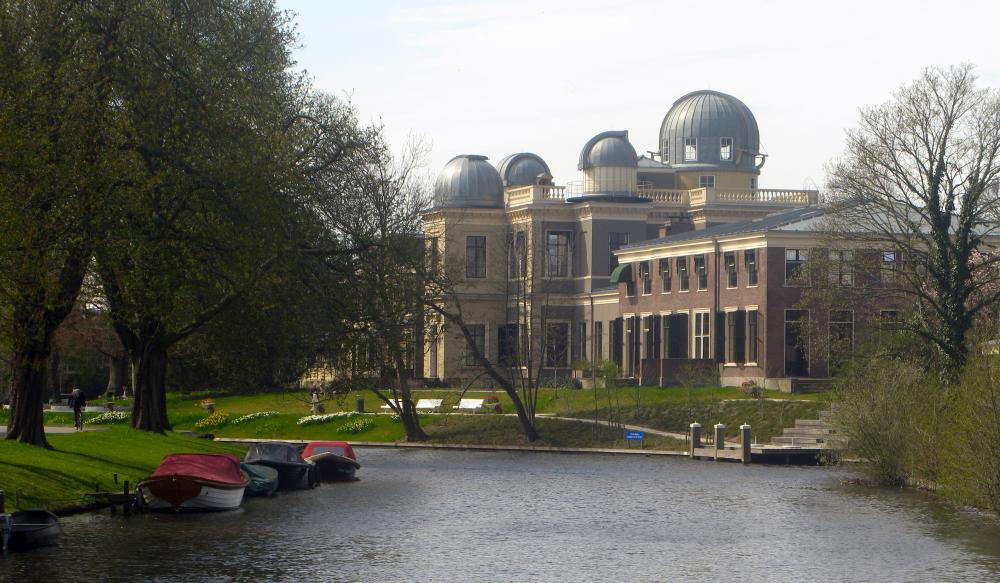
Fig. 5. Oude Sterrewacht Leiden Observatory after restoration 2013 (Wikipedia, CC3, Erik Zachte)
This building (1860) now houses the public observatory and part of the law faculty.
Comparison with related/similar sites
It is an observatory, built on a bastion like e.g. Nuremberg Castle Observatory (1677 to 1757).
Threats or potential threats
no threats
Present use
The Oude Sterrewacht Leiden is now used as public observatory.
Astronomical relevance today

Fig. 6a. Leiden Observatory, Huygens and Oort Building in the Campus (CC3, Samwalton9)
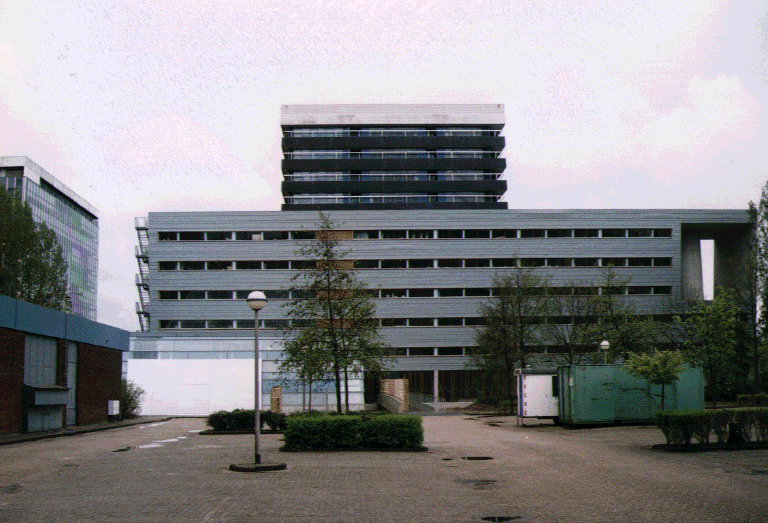
Fig. 6b. Leiden Observatory, Oort Building in the Campus (Leiden University Observatory)
Leiden Observatory carries out world class research in the formation of structures in the universe and the origin and evolution of galaxies, the detection and characterization of exoplanets, and the formation of stars and planetary systems, and astronomical instrumentation.
Leiden Observatory, Netherlands
Huygens Laboratory / J.H. Oort Building
Niels Bohrweg 2, NL-2333 CA Leiden
52°10’08’’N, 04°27’29’’E, Elevation 3m
References
Bibliography (books and published articles)

Fig. 7. Oude Sterrewacht Leiden by Gilles Otten - in Van Gogh style by Alex using Ostagram.ru (Pietrow 2018)
- Berg, Rob van den: Een passie voor precisie. Frederik Kaiser (1808--1872). Vader van de Leidse Sterrewacht. Amsterdam: Prometheus 2022.
- Gent, R.H. van & J.H. Leopold: De tijdmeters van de Leidse Sterrewacht. Leiden: Museum Boerhaave 1992.
- Heijden, Petra van der: Frederik Kaiser (1808--1872) and the modernisation of Dutch astronomy. (2003), https://web.archive.org/web/20060928093027/http://www.strw.leidenuniv.nl/~heijden/kaiser_en.html (14.8.2022)
- Kaiser, Friedrich: Geschichte und Beschreibung der Sternwarte in Leiden. Haarlem: Joh. Enschede 1868.
- Katgert-Merkelijn, J.K.: De Opvolging van W. de Sitter. In: Jaarboekje voor Geschiedenis en Oudheidkunde van Leiden en Omstreken. Leiden: Nautilus 1997.
- Pietrow, Alexander G.M.: Van zolders naar koepels -- vier eeuwen geschiedenis van de Leidse Sterrewacht. From Attics to Domes. Leiden: Ostrw Books 2018.
- Sitter, Willem de: Short history of the Observatory of the University at Leiden 1633--1933. Haarlem: Joh. Enschedé 1933.
- Wolfschmidt, Gudrun (Hg.): Astrophysik seit 1900 - Jubiläum von Karl Schwarzschild (1873-1916) und Ejnar Hertzsprung (1873-1967). Development of Astrophysics - Jubilee of Karl Schwarzschild (1873-1916) and Ejnar Hertzsprung (1873-1967). Proceedings der Tagung des Arbeitskreises Astronomiegeschichte in der Astronomischen Gesellschaft in Berlin, Sept. 2023. Ahrensburg bei Hamburg: tredition (Nuncius Hamburgensis - Beiträge zur Geschichte der Naturwissenschaften; Bd. 59) 2024.
- Zuidervaart, Huib et al.: Frederik Kaiser (1808--1872). Schepper van de 'nieuwe' Leidse Sterrewacht. In: Themanummer van Studium (2011), vol. 4, nr 3.
Links to external sites
No multimedia content published
Currently there is no multimedia content published for this case study
